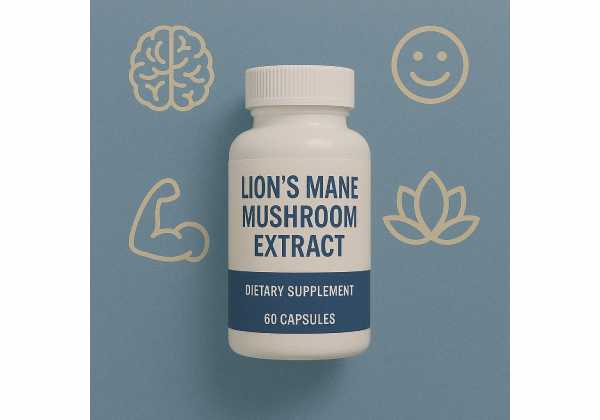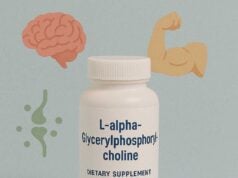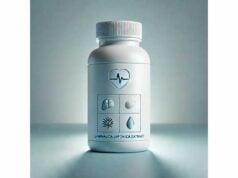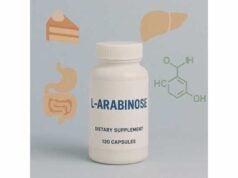
Lion’s mane (Hericium erinaceus) is a distinctive white, shaggy mushroom valued both as food and as a focused extract for brain and nerve support. Modern products concentrate its signature compounds—hericenones (mostly from the fruiting body) and erinacines (mostly from mycelium)—alongside beta-glucan polysaccharides. People reach for lion’s mane to support memory, attention, mood, and sleep quality, or as a gentle daily aid for cognitive longevity. Research ranges from pilot trials in healthy adults to longer studies in mild cognitive impairment and early Alzheimer’s, with a mixed but encouraging picture: some studies suggest modest improvements in cognitive testing and perceived stress, while others show little to no change. Quality and chemistry matter: hot-water extracts emphasize beta-glucans, alcohol or dual extracts capture triterpenes, and erinacine-enriched mycelium differs from fruiting-body powder. This guide explains what to expect, how to choose a product that matches your goals, practical dosing strategies, safety and interaction considerations, and where the evidence is strongest—and still evolving.
Key Insights
- May modestly support processing speed, attention, and perceived stress in some users after weeks of steady use.
- Typical adult dose: 1,000–3,000 mg/day of standardized extract; evaluate effects after 6–8 weeks.
- Generally well tolerated; occasional GI upset, skin flushing, or rash can occur.
- Avoid or seek medical guidance if you are pregnant or breastfeeding, have significant liver disease, take anticoagulants, or have surgery scheduled.
Table of Contents
- What is lion’s mane extract?
- Does it really work for cognition?
- Proven and emerging benefits explained
- How to take it: dosage and timing
- Common pitfalls and how to avoid them
- Side effects, interactions, and who should avoid
- Evidence snapshot: what studies show
What is lion’s mane extract?
Lion’s mane basics. Hericium erinaceus is a culinary mushroom with long, icicle-like spines. In supplements, you will see three core materials: fruiting body (the visible mushroom), mycelium (the thread-like growth substrate), and spores or spore oil. Each yields different bioactive profiles. Reputable products specify species, plant part, and extraction method.
Key actives and why they matter.
- Hericenones (fruiting body-dominant) and erinacines (mycelium-dominant) are terpenoids studied for their influence on nerve growth factor pathways and neuroplasticity. Their presence depends on the material and solvent used.
- Beta-glucans are water-soluble polysaccharides that support immune modulation and may contribute to overall resilience.
- Minor compounds (sterols, phenolics, peptides) may provide complementary antioxidant and anti-inflammatory effects.
Extract types you will encounter.
- Hot-water extracts: emphasize beta-glucans; often standardized to total polysaccharides or specific beta-glucan percentages.
- Ethanol or dual (water + ethanol) extracts: capture alcohol-soluble terpenoids (hericenones/erinacines), often associated with “brain” claims and a characteristic bitter taste.
- Erinacine-enriched mycelium: industrially cultivated mycelium with quantified erinacines; composition differs from fruiting-body-only products.
- Spore oil: a lipid fraction pressed from cracked spores; marketing often highlights “calm focus,” though clinical data are comparatively sparse.
How lion’s mane may act. Rather than behaving like a fast-acting stimulant, lion’s mane shows network-level effects: gentle support for neurotrophic signaling, synaptic plasticity, and stress modulation. Users who notice benefits typically describe clearer focus, smoother word recall, or steadier mood after several weeks—subtle shifts that accumulate with consistent dosing. Effects depend on baseline status, dose, extract profile, and time on regimen.
What lion’s mane is not. It is not a replacement for sleep, movement, or medical care, and it does not acutely transform test scores or productivity in most people. Think of it as a supporting actor in a broader cognitive-health pattern built on routine, nutrition, exercise, and stress hygiene.
Bottom line: Choose lion’s mane by chemistry, not buzzwords—match extract type to your goal (beta-glucans vs terpenoids; fruiting body vs erinacine-enriched mycelium), and give it 6–8 weeks before judging results.
Does it really work for cognition?
Short answer: The clinical picture is promising but mixed. Several trials suggest modest improvements in selected cognitive tasks, processing speed, or subjective stress after acute or short-term use, and longer mycelium-based interventions report signals in early Alzheimer’s and mild cognitive impairment. Other studies, including well-controlled acute trials, find no overall effect on composite cognition or mood. Differences in extract type, dose, duration, and participants likely explain the inconsistency.
What improves when it helps.
- Processing speed and task performance: Some pilot work shows quicker responses on specific tasks after a single dose or several weeks. Effects are typically task-specific rather than global.
- Subjective stress and sleep quality: Users often report calmer evenings, fewer mid-night awakenings, or steadier daytime mood after steady use.
- Older adults and early cognitive decline: Mycelium enriched with erinacines has produced encouraging signals in longer studies on cognitive scales, daily function, and imaging biomarkers.
What does not consistently change.
- Global cognition in healthy young adults: Multiple trials fail to show broad improvements across composite scores after acute doses.
- Metabolic or vascular markers: Lion’s mane is not a proven lever for blood pressure, lipid panels, or glucose in the general population, though broader diet and lifestyle shifts can yield those changes.
Why results vary across studies.
- Chemistry: A hot-water fruiting-body extract dominated by beta-glucans is not the same as an erinacine-rich mycelial extract. Spore oils differ again.
- Dosing and duration: Acute (single-dose) designs may miss effects that require weeks to emerge; sub-therapeutic doses can yield null results.
- Population: People with higher baseline burden (age-related decline, sleep disturbance, chronic stress) may be more likely to notice benefits than healthy twenty-somethings.
- Outcome measures: Task choice matters. Gains in one domain (e.g., pegboard dexterity) may not generalize to a composite cognitive index.
Evidence-aligned expectations. If your goal is to feel mentally steadier and less on edge, a dual extract or erinacine-enriched mycelium taken consistently for 6–12 weeks is a reasonable self-trial. If you are pursuing cognitive longevity or healthy aging, lion’s mane can be part of a long-game stack—prioritize sleep, strength training, fiber-rich meals, and regular cognitive challenges, and consider lion’s mane as a measured adjunct.
Proven and emerging benefits explained
Cognition and attention (most common goal). People take lion’s mane for word-finding ease, working memory, or sustained attention. Trial results show modest improvements in selected tasks or perceived stress over weeks, with stronger signals in populations under cognitive strain. Expect subtle changes rather than dramatic shifts; use consistent dosing, and test one variable at a time to spot genuine effects.
Mood, stress, and sleep quality. Small human studies and many user reports note improvements in perceived anxiety or depressive symptoms, and smoother sleep. These endpoints are often subjective and sensitive to placebo effects, but they matter to day-to-day life. If evening calm is your priority, time lion’s mane toward late afternoon or night, and pair it with a wind-down routine (dim lights, consistent bedtime, light stretching).
Neuroprotection and healthy aging. Preclinical work suggests that hericenones and erinacines modulate neurotrophic pathways and may influence synaptic plasticity. Longer human trials using erinacine-enriched mycelium report encouraging signals in early cognitive decline. Consider this a long-horizon strategy: lion’s mane can sit alongside aerobic activity, resistance training, Mediterranean-style eating, and blood pressure control to support brain aging.
Peripheral nerve support (emerging). Case series and animal work hint at benefits for nerve regeneration and neuropathic discomfort. Human evidence is preliminary; if this is your interest, involve a clinician and monitor changes (symptom diaries, function tests).
Gut-brain angle. Polysaccharides and terpenoids may shape the gut environment, with downstream effects on immune tone and mood. Combining lion’s mane with fermented foods, adequate fiber, and diverse plant intake likely enhances this route more than lion’s mane alone.
Exercise and learning synergy. Because neuroplasticity is activity-dependent, stack lion’s mane with skill practice (language learning, instrument practice) and exercise (especially interval and resistance training). If lion’s mane nudges neurotrophic pathways, training provides the signal that tells the brain where to build.
Who notices benefits most. People under sustained stress, inconsistent sleepers, or adults experiencing age-related tip-of-the-tongue moments often report the most tangible improvements. Those seeking a rapid, stimulant-like effect are more likely to be disappointed.
Practical markers to track.
- Objective: time to complete a set cognitive task or puzzle; number of night awakenings; weekly step count and exercise minutes.
- Subjective: daily 1–10 scores for focus and stress; sleep satisfaction on waking.
- Functional: how often you lose your train of thought or misplace items; ease of recalling names during social interactions.
How to take it: dosage and timing
Match format to your goal.
- Hot-water extract (beta-glucans): useful for immune modulation and general resilience; often gentler on taste and stomach.
- Dual extract (water + ethanol): more complete spectrum capturing terpenoids (hericenones/erinacines) and polysaccharides; favored for cognitive goals.
- Erinacine-enriched mycelium: targeted “brain” approach; typical in clinical trials on early cognitive decline.
- Spore oil: concentrated lipids; best for experienced users exploring niche effects, not first-line.
Adult dosing ranges.
- Standardized extract (capsule or powder): Start at 1,000–1,500 mg/day with food. If well tolerated after one week and you want a more assertive trial, titrate toward 2,000–3,000 mg/day for 6–12 weeks, then reassess.
- Erinacine-enriched mycelium: Follow label amounts; research protocols commonly use ~1,000 mg/day in divided doses for extended periods.
- Tea/decoction: 2–5 g/day of dried slices simmered 20–30 minutes. This is less standardized; use for culinary enjoyment rather than precise effects.
- Spore oil: Typically 1–3 softgels/day, but compositions vary widely—do not equate mg of spore oil to mg of extract.
Timing tips and stacking.
- For focus without sleepiness, take the main dose with breakfast. If you notice calming sedation, shift part or all of the dose to the evening.
- Pair with skill practice (e.g., 30 minutes of language learning) after dosing to test practical carryover.
- Complementary additions, one at a time: L-theanine 100–200 mg (daytime calm), magnesium glycinate 100–200 mg elemental (evening wind-down), or creatine 3–5 g/day (evidence-based cognitive and muscular support). Avoid complicated stacks early on—you will not know which variable helped.
Choosing a trustworthy product.
- Look for species and part (Hericium erinaceus, fruiting body vs mycelium) and extraction method (hot-water, ethanol, dual).
- Prefer labels that quantify actives: beta-glucan percentage, hericenones/erinacines, or total terpenes. “Polysaccharides” alone is vague; beta-glucans are the meaningful subset.
- Seek third-party testing or a lot-specific certificate of analysis for identity, potency, and purity (heavy metals, solvents, microbiology).
Evaluate results like a scientist.
- Pick one sensible dose and hold it for 6–8 weeks.
- Track 2–3 markers (e.g., sleep onset time, number of mid-night awakenings, a weekly word-recall test).
- If there’s no clear signal, consider switching extract type (e.g., hot-water → dual, fruiting body → erinacine-enriched mycelium) before increasing dose further.
Storage and handling.
- Keep bottles cool, dry, and away from light; close promptly. Powders clump in humidity—use desiccants.
- Expect natural batch-to-batch variation in color and aroma; rancid or musty smells are a red flag.
Common pitfalls and how to avoid them
1) Expecting stimulant-like effects. Lion’s mane is not caffeine. If you want sharper mornings, build a sleep and light routine (morning sunlight, consistent bedtime) and use lion’s mane as a background nudge.
2) Choosing by hype over chemistry. “High polysaccharides” can mean starch unless the label specifies beta-glucans. Likewise, fruiting-body-only products may be low in erinacines, while mycelial products may be rich in them but also include residual grain. Decide what you want first, then choose accordingly.
3) Stopping too soon or changing too fast. Most benefits—if they appear—emerge over weeks. Rapidly bouncing between brands and doses makes it impossible to tell what worked. Commit to a 6–8-week block before judging.
4) Over-stacking supplements. Combining lion’s mane with several calming herbs, adaptogens, and sleep aids at once can muddy the waters or cause excessive sedation. Add one change at a time, and log how you feel.
5) Ignoring context. Cognitive performance is strongly shaped by sleep quality, aerobic fitness, and learned skills. Align your supplement routine with a training plan (e.g., vocabulary drills or instrument practice), and protect the basics—hydration, protein intake, fiber, and movement.
6) Misreading labels. Look for:
- Species (Hericium erinaceus), plant part, and extraction method.
- Declared actives (beta-glucans, hericenones, erinacines), not unspecified “polysaccharides.”
- Serving size and mg per serving that match the ranges used in research.
- Independent testing and COA access.
7) Assuming “natural means safe for everyone.” While lion’s mane is generally well tolerated, rare rashes, dizziness, or GI upset occur. People on anticoagulants, with liver disease, who are pregnant or breastfeeding, or who have upcoming surgery should seek medical advice before starting.
8) Neglecting discontinuation rules. For procedures with bleeding risk, plan to stop 1–2 weeks prior unless your surgeon or dentist instructs otherwise.
9) Missing the off-ramp. If there is no noticeable benefit after a fair trial, step off. More is not always better; consider reallocating budget to habits with larger effect sizes (resistance training, sleep coaching, language classes).
Success formula recap. Define a clear goal, pick a chemistry-matched product, set a realistic dose and timeframe, track simple outcomes, and iterate with patience and intention.
Side effects, interactions, and who should avoid
Overall tolerability. Most adults tolerate 1,000–3,000 mg/day well. The most common complaints are mild GI upset (sour stomach, loose stools), skin flushing, transient rash, or dizziness—often when starting at higher doses or taking extracts on an empty stomach. Bitter burps can occur with alcohol-rich tinctures.
Liver considerations. Current safety reviews consider lion’s mane unlikely to cause clinically apparent liver injury at typical doses, and it is not linked to routine liver enzyme elevations in small trials. That said, anyone with pre-existing liver disease or unexplained abnormal liver tests should seek medical advice before use and avoid multi-ingredient blends with unknown quality.
Bleeding and procedures. Triterpenoid-rich extracts are sometimes discussed for theoretical effects on platelet function. If you take warfarin, DOACs, clopidogrel, or regular high-dose NSAIDs, or if you have a bleeding disorder, consult your clinician before starting. Plan to pause 1–2 weeks before surgery or invasive dental work unless cleared otherwise.
Allergy and hypersensitivity. Mushroom allergies are uncommon but possible. Stop immediately if you experience hives, swelling, wheeze, throat tightness, or facial flushing; seek urgent care for severe reactions.
Pregnancy, breastfeeding, pediatrics. There is insufficient evidence to vouch for concentrated extracts in pregnancy or breastfeeding. Culinary amounts are generally considered acceptable for most, but discuss any supplement with your prenatal or pediatric clinician.
Drug and nutrient interactions.
- Sedatives and sleep aids: watch for excessive drowsiness if combining with prescription hypnotics or strong calming botanicals.
- Hypoglycemics/insulin: large glycemic changes are unlikely from lion’s mane alone; monitor if you are simultaneously changing diet or exercise.
- Immunotherapies: beta-glucans modulate immune tone; coordinate with your specialist if you receive immunotherapy.
Practical safety tips.
- Start low, go slow: begin at 1,000 mg/day with food; increase as needed after 7–10 days.
- Cycle intelligently: for everyday resilience, consider 8–12 weeks on, 2–4 weeks off, then reassess.
- Choose clean products: independent testing reduces contamination risks (heavy metals, residual solvents, microbes).
Stop and seek care if you notice unusual bleeding, persistent rash, dark urine, yellowing of the eyes, severe abdominal pain, or breathing difficulty. Supplements should simplify your life, not complicate it.
Evidence snapshot: what studies show
Acute and short-term trials in healthy adults. Placebo-controlled studies using fruiting-body extracts have tested single doses or ~4 weeks of supplementation. Results are mixed: some detect faster performance on specific tasks or reduced subjective stress, while others report no overall change in composite cognition or mood. These findings suggest any acute benefits are likely modest and domain-specific and may require longer use to consolidate.
Longer trials in cognitive decline. Trials using erinacine-enriched mycelium over many months in people with mild cognitive impairment or early Alzheimer’s report encouraging signals across multiple domains—cognitive scales, daily function indices, and even imaging markers consistent with preserved tissue characteristics. These studies also report good tolerability, with a minority discontinuing due to GI symptoms or rash. Because sample sizes are modest and interventions vary, results should be viewed as supportive, not definitive.
Mood, sleep, and stress outcomes. Smaller human trials and observational work indicate improvements in depressive and anxiety symptoms and better sleep quality in specific subgroups (e.g., middle-aged adults with sleep complaints). These outcomes rely on validated questionnaires and can be sensitive to placebo effects, but they map well to user priorities.
Safety evidence base. Human trials and post-marketing safety reviews characterize lion’s mane as generally well tolerated. Reported adverse events are typically mild and transient, and authoritative safety summaries rate the likelihood of clinically apparent liver injury as unlikely when used at typical supplemental doses.
Interpreting the whole. Lion’s mane extract is not a silver bullet for focus or memory, but it has a credible role as a low-risk, potentially helpful adjunct for cognitive steadiness, mood, and healthy aging—especially when you match chemistry to goals, choose quality products, and give the regimen adequate time. For disease management, treat the evidence as promising but preliminary and keep your medical team in the loop.
How to act on the evidence.
- Clarify your primary goal (focus, sleep quality, cognitive aging).
- Select an extract that aligns with that goal (dual extract or erinacine-enriched mycelium for “brain-forward” aims).
- Use 1,000–3,000 mg/day consistently for 6–12 weeks.
- Track simple markers; adjust dose or extract type based on results.
- Re-evaluate honestly; continue only if benefits are meaningful.
References
- The Acute and Chronic Effects of Lion’s Mane Mushroom Supplementation on Cognitive Function, Stress and Mood in Young Adults: A Double-Blind, Parallel Groups, Pilot Study (2023) (RCT)
- Acute effects of a standardised extract of Hericium erinaceus (Lion’s Mane mushroom) on cognition and mood in healthy younger adults: a double-blind randomised placebo-controlled study (2025) (RCT)
- Prevention of Early Alzheimer’s Disease by Erinacine A-Enriched Hericium erinaceus Mycelia Pilot Double-Blind Placebo-Controlled Study (2020) (RCT)
- Lion’s Mane (2024) (Safety Overview)
- Hericium erinaceus in Neurodegenerative Diseases (2023) (Review)
Disclaimer
This article is informational and does not replace individualized medical advice, diagnosis, or treatment. Always consult a qualified clinician before starting lion’s mane—especially if you are pregnant or breastfeeding, have liver disease, take anticoagulants or other prescription medications, or have surgery planned. If you experience adverse reactions, discontinue use and seek medical care.
If you found this guide useful, please consider sharing it on Facebook, X (formerly Twitter), or your preferred platform, and follow us for more evidence-guided wellness content. Your support helps us continue creating high-quality resources.










